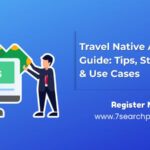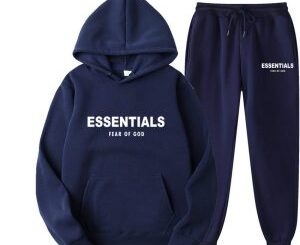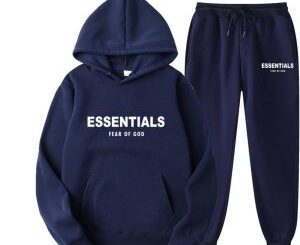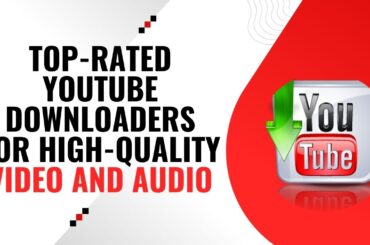In the world of online travel advertising, native ads are quickly becoming one of the most effective ways to engage potential customers. These ads blend seamlessly with the content that users are already consuming, offering a non-intrusive way to promote travel-related services and destinations. In this guide, we will explore the ins and outs of travel native ads, offering tips, strategies, and use cases for brands and marketers looking to make the most of this powerful advertising format.
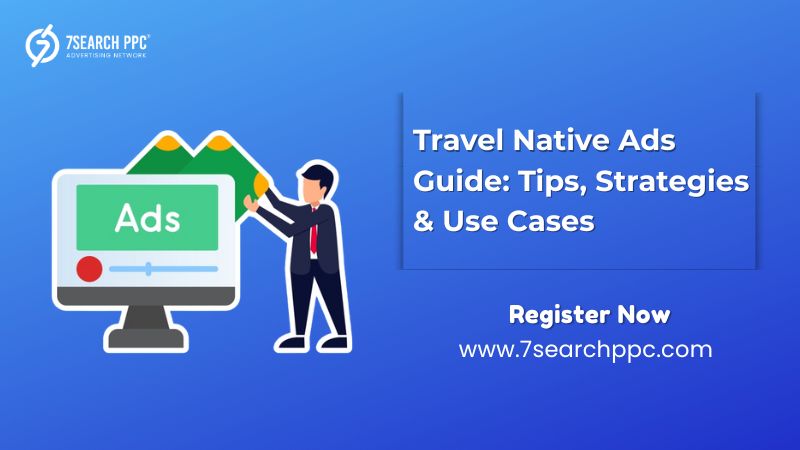
What are Travel Native Ads?
Native ads are a type of advertising that match the look, feel, and function of the platform they appear on. Unlike traditional banner ads, which are easily ignored by users, native ads feel like part of the content experience. For travel marketers, this means promoting destinations, accommodations, activities, or even travel gear in a way that is not disruptive but highly engaging.
Types of Travel Native Ads
Travel native ads can be found across various digital platforms, including websites, mobile apps, and social media feeds. Here are some common types:
- Sponsored Content: Articles or blog posts sponsored by a travel brand that are relevant to the audience.
- In-Feed Ads: These ads appear within social media feeds (e.g., Facebook, Instagram, Twitter) or even news websites, looking like organic posts or updates.
- Recommendation Widgets: These are small ads embedded within travel blogs or news websites that recommend destinations or products.
- Search Ads: These ads appear within search engine results, looking like organic search results but are, in fact, paid placements.
Why Choose Travel Native Ads for Your Campaign?
Native ads are an excellent choice for brands in the travel industry for several reasons:
- Non-Intrusive: Native ads blend seamlessly with the surrounding content, meaning users are more likely to engage with them than with traditional display ads.
- Enhanced Engagement: Studies show that native ads have higher click-through rates (CTR) compared to display ads, which is crucial when trying to capture the attention of potential travelers.
- Better Targeting: Travel advertising platforms and networks allow you to target specific demographics, including travelers who are actively searching for information about particular destinations, experiences, or services.
- Building Trust: Because native ads often mirror editorial content, they can help build trust with users by offering relevant and informative content rather than a direct sales pitch.
Travel Native Ads Strategies: How to Make Them Work for You
Crafting Engaging Content
The success of your native ads largely depends on the quality of the content. Your ads should offer value to the user, whether it’s useful travel tips, guides, or information about a destination. Here’s how to do it right:
- Informative and Relevant: Make sure your content aligns with the audience’s interests. For instance, if your ad is promoting a tropical beach resort, ensure the content includes tips for tropical vacations, packing guides, or information about local culture and activities.
- Storytelling: Humans love stories. If your ad can tell a captivating travel story or paint a vivid picture of a destination, it will resonate much better with your audience.
Using Visuals to Enhance Appeal
In travel advertising, visuals are incredibly powerful. Whether it’s stunning imagery of a destination or a high-quality video showcasing an experience, visuals help attract attention and evoke emotions. Here are a few ways to use visuals effectively:
- High-Quality Images: Travel ads that feature captivating, high-quality images of destinations are more likely to grab attention and entice users to click.
- Videos and Interactive Media: Short travel video ads or interactive maps that showcase destinations or tours can be highly engaging for users.
- Personalization: Tailor your visuals to match the preferences and behaviors of your target audience, such as showcasing activities they may be interested in based on their past travel history.
Placement and Context Matter
Even the best native ad will fail if it’s placed in the wrong context. Understanding where to place your travel ads is essential. Here are some key considerations:
- Choosing the Right Platform: Leverage travel advertising networks and platforms to ensure your ad reaches the right audience. If you’re targeting young, adventure-seeking travelers, platforms like Instagram or YouTube might be more effective than news or travel-specific sites.
- Content Relevance: Ensure the surrounding content aligns with the ad. For example, if you’re advertising luxury resorts, it’s better to place the ad on a high-end lifestyle or travel blog than on a budget travel site.
Call-to-Action (CTA)
In any advertising format, the call-to-action (CTA) is crucial. A strong CTA directs the user towards the next step, whether it’s booking a flight, downloading a guide, or subscribing to a newsletter. Here are some tips for crafting effective CTAs:
- Be Clear and Direct: A simple “Book Your Stay Now” or “Find Your Dream Destination” is more effective than vague or convoluted language.
- Create Urgency: Phrases like “Limited Time Offer” or “Book Today for Exclusive Deals” can encourage users to act quickly.
Best Travel Advertising Platforms and Networks for Native Ads
When it comes to travel native ads, choosing the right advertising platform is crucial to achieving success. Here are some of the top travel advertising platforms and ad networks to consider:
Outbrain
Outbrain is a popular native advertising platform that recommends content to users across a wide network of premium publishers. It’s perfect for travel brands that want to create sponsored content and have it featured on major travel or news websites. Outbrain supports engaging travel stories, guides, and destination features.
Taboola
Taboola is another leading native advertising platform, offering a wide reach across global publishers. It’s great for promoting travel-related content such as sponsored articles, destination overviews, and trip itineraries. Its advanced AI-driven recommendations help reach the right audience at the right time.
7Search PPC
7Search PPC is a cost-effective advertising network that supports native ads for travel businesses. It offers flexible budgeting and targeting options to help small and medium-sized travel brands gain visibility. With options for geo-targeting and device targeting, it’s a solid platform for niche travel campaigns.
Create Your Campaign & Get Results!
RevContent
RevContent is known for its robust audience targeting and customizable ad widgets. It’s ideal for travel brands that want to reach specific demographics or behavior-based audiences. With high-quality traffic and detailed analytics, RevContent is effective for boosting travel bookings and awareness.
Use Cases for Travel Native Ads
Promoting Travel Deals and Offers
One of the most common use cases for travel native ads is promoting special offers or discounts. If your travel company is offering discounted flights, hotel stays, or vacation packages, native ads can be an excellent way to inform travelers in an engaging way.
Destination Marketing
Whether you’re promoting a country, city, or local tourism, native ads are a fantastic method to showcase what a destination has to offer. Through sponsored content, you can feature articles that highlight key attractions, hidden gems, or cultural experiences.
Travel Gear and Products
Many travel advertisers use native ads to promote travel-related products like luggage, accessories, or outdoor gear. These ads often appear as product recommendations on lifestyle or travel blogs.
Conclusion
In summary, travel native ads offer a highly effective and engaging way to reach potential travelers without disrupting their online experience. By crafting high-quality content, targeting the right audience, and leveraging the best travel advertising platforms, your travel brand can stand out in an increasingly crowded digital space. Whether you’re promoting a destination, special offer, or travel gear, native ads can help boost your campaign’s performance and drive valuable traffic to your site.
Frequently Asked Questions (FAQ)
What is the difference between native ads and display ads?
Ans: Native ads blend seamlessly with the content of the website, making them less intrusive. Display ads are more obvious and can often be ignored by users. Native ads are designed to look and feel like part of the content, whereas display ads are usually banner-like and more visually distinct.
Are native ads more effective than other types of ads for travel brands?
Ans: Yes, native ads generally perform better in terms of engagement and click-through rates. Because they match the look and feel of the content, users are more likely to interact with them than traditional display ads.
Can I use native ads on social media for travel marketing?
Ans: Absolutely! Platforms like Facebook, Instagram, and Pinterest offer native advertising options that work well for travel brands. These platforms allow you to target specific audiences based on their travel interests, behaviors, and demographics.
What are the costs associated with travel native advertising?
Ans: Costs vary based on the platform, targeting options, and ad format. Typically, native ads are charged on a cost-per-click (CPC) or cost-per-impression (CPM) basis. However, because of their higher engagement rates, many advertisers find native ads to be more cost-effective in the long run.


